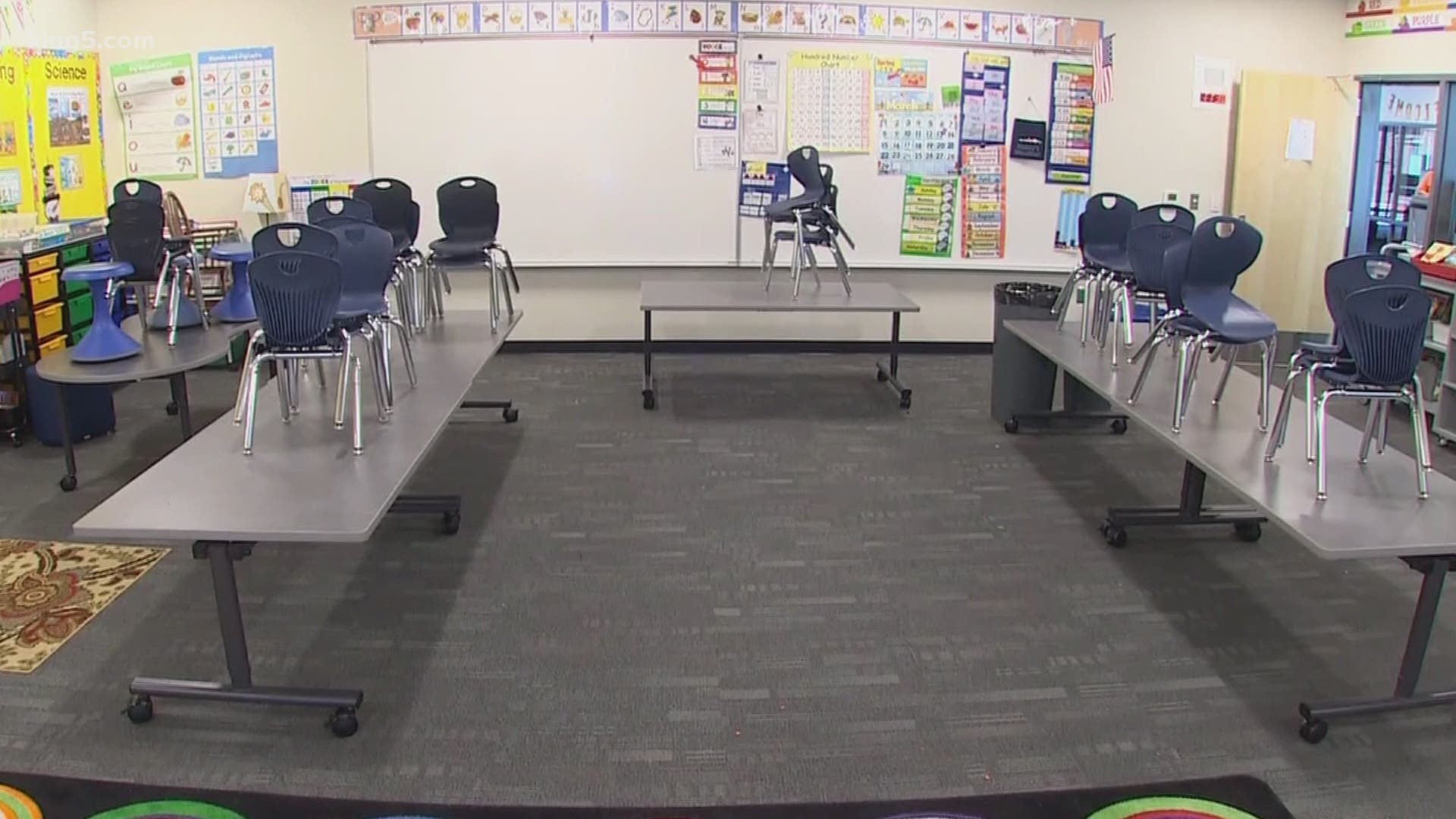Schools in Washington state could mitigate the risk of COVID-19 transmission by taking appropriate steps that include school-based countermeasures, hybrid scheduling, and a phased-in approach, according to a new report.
The report by the Institute for Disease Modeling found that if schools in communities where transmission is low can implement countermeasures consistently, then the value of testing people is "limited."
Routine screening of asymptomatic people could help reduce transmission if schools are the source of infection, according to the report. Daily screening and contact tracing would still be important countermeasures.
The report reaffirms the importance of reducing community transmission prior to opening K-12 schools for in-person learning. The report suggests a phased-in approach would include bringing back students in kindergarten through fifth grade first.
Other countermeasures would include wearing masks, cohorting students, physical distancing, proper hygiene, and improved ventilation.
Without countermeasures, up to 45% of teachers and staff and 33% of students could be infected with COVID-19 in the first three months of returning to class, according to the report. Countermeasures reduce the number infected to less than 2%, even with a full schedule.
“These latest results indicate that the benefits of routine diagnostic testing will be limited if COVID-19 prevalence is low and if school-based countermeasures can be fully implemented,” said Dr. Daniel Klein, senior research manager for Institute for Disease Modeling. “Of course, diagnostic testing remains valuable for disease detection and response, and for assessing school community prevalence.”
The result's of the report are based off modeling with assumptions based on the latest science and data. It's possible, the report's authors note, that children could be found to be equally susceptible to COVID-19 infection, which would generate a nearly three-fold increase in a three-month infection rate. Currently, younger people, especially under the age of 19 are believed to be less susceptible to a COVID-19 infection, and even less so for those under 10.
Community transmission could also increase as people return to work.
The decision to bring students back to school is up to local districts in Washington state. The Department of Health has issued guidance that includes benchmarks and thresholds on when it's appropriate to bring students back to class - currently 75 cases or fewer over a 14-day period within a community.
Officials have warned that the winter months could increase the number of COVID-19 infections as people stay inside. Officials Thursday said the number of cases in Washington state are "headed in the wrong direction."

